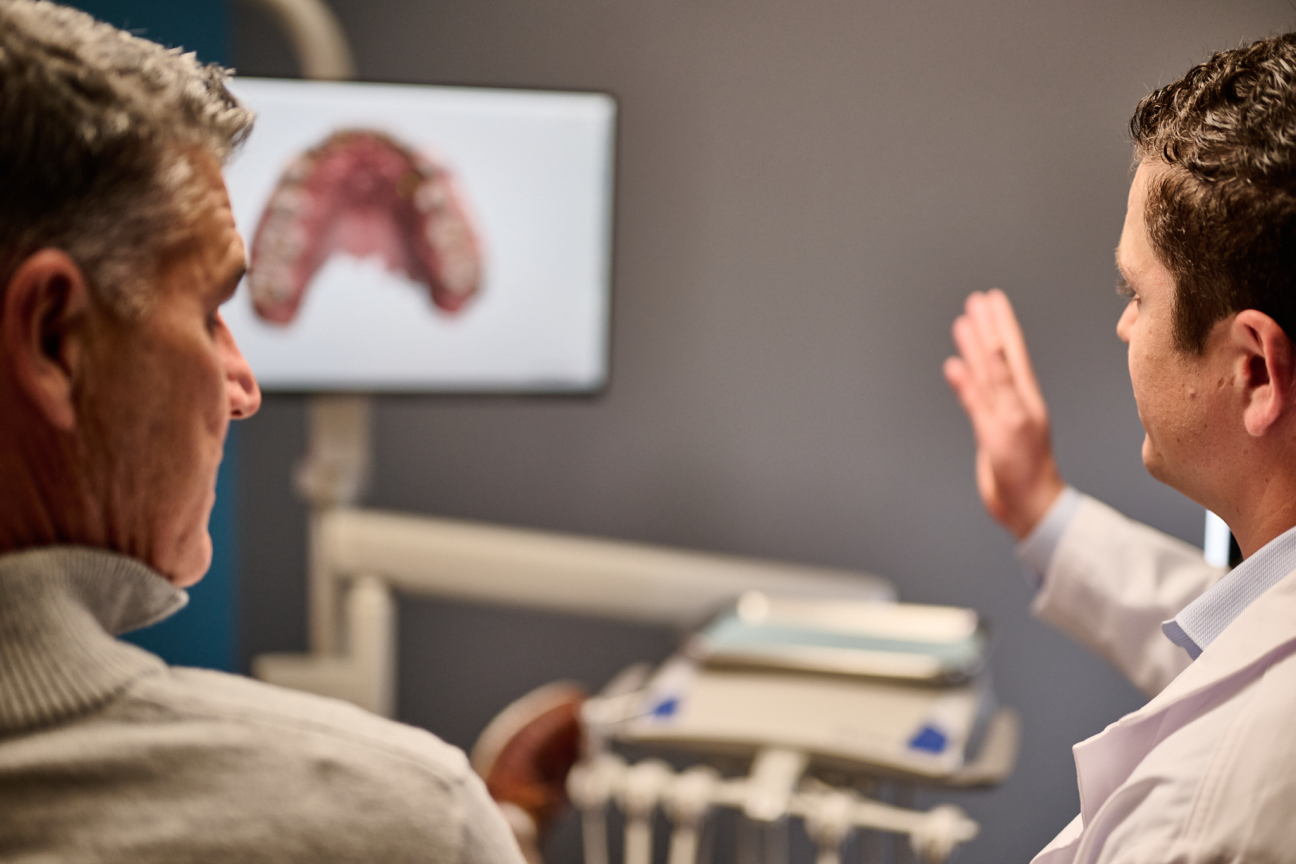Periodontal surgery procedure
When gum disease progresses beyond gingivitis to periodontitis, there can be extensive damage to the teeth, which may include bone loss and gum recession. Someone suffering from advanced periodontal disease, which is the most severe stage, may have no choice but to use surgical intervention to beat the disease and in order to save their teeth. There are several periodontal surgeries that a dentist may consider as part of a periodontal disease treatment plan. We’ll cover the types of periodontal procedures and what to expect before, during and after a periodontal surgery.

What is periodontal surgery?
Periodontal surgery treats dental conditions that affect the gums and jawbone. The surgery is typically done around the bottom of the teeth and below the gumline to resolve issues caused by periodontal disease, like infection and decay.
Patients may be referred to a periodontist after gum disease is uncovered during routine cleanings. Your dentist will inform you if less invasive treatment options like scaling and root planing can be done before turning to surgery.
Types of periodontal surgical procedures
There are several types of periodontal procedures. It’s up to your dentist to recommend the most appropriate option based on your health history and dental needs.
Bone grafting
A bone graft helps to repair bone structure around the teeth, which can be damaged by advanced gum disease. Often, bone grafting is done as a first step before additional treatments as it can increase the volume of available bone, creating a more stable environment for other procedures, like an implant.
Guided tissue regeneration
With guided tissue regeneration (GTR), a mesh-like tissue is placed between the bone and gum tissue. The purpose is to clean out harmful bacteria and then create space to allow bone and tissue to regrow naturally.
Flap surgery
Flap surgery helps remove tartar from deep in the gums. In the procedure, the periodontist cuts the gum to separate it from the teeth, then cleans deep below the gum line. Once complete, the periodontist will suture the gums back in place to heal.
Soft tissue grafts
A soft tissue graft helps restore and strengthen receding gums. In this procedure, the periodontist will take tissue from the roof of the mouth and use it to rebuild the gums where they’ve receded the most.

Who is a good candidate for a periodontal surgical procedure?
Periodontal procedures tend to make sense for patients with advanced periodontal disease. Patients with gingivitis or early-stage periodontal disease may be able to use less invasive treatment options to prevent gum disease from developing into a severe state.
How to prepare for a periodontal surgical procedure
In preparation for periodontal surgery, patients may be asked to:
Undergo a pre-operative exam
A dentist will assess medical history, examine overall oral health, check for infection, and give approval for the surgery to move forward.
Cut out blood thinners from daily routine
If your doctor advises you to, you should avoid taking certain medications that cause blood to thin, like aspirin.
Quit smoking
Cease smoking and drinking within 24 hours of the procedure.
Follow dentist’s care plan
Take any antibiotics as prescribed to alleviate the risk of infection after the procedure.
Schedule your transportation
Set up a safe ride home from the appointment as required.

What happens during a periodontal surgical procedure?
During the periodontal procedure, your periodontist will ensure you’re comfortable and give appropriate pain management to numb the area they’ll be working on. The length of the procedure varies depending on the severity of the state of the disease, which procedure is being completed, and how many teeth are being treated. For example, a soft tissue graft on a single tooth is likely to take less time than bone grafting on multiple lower teeth. In general, periodontal procedures may take a few hours to complete.
Periodontal surgery procedure recovery
How long it takes to recover from a periodontal procedure depends on the complexity of the surgery and the number of teeth that were treated. However, there are a few steps you’ll want to take following the procedure to help aid in recovery.
Medicate
Take medications as prescribed for the entire duration, even if you’re feeling better.
Eat soft foods
Stick to a soft foods or liquid diet as prescribed by your periodontist for the time frame recommended.
Rest up
Stay home from work or school to rest for the first 24 hours after surgery or for as long as recommended by your periodontist.
Limit smoking
Avoid smoking if you can. Talk with your dentist for a healing plan that works for you.
Mind sensitivity
Avoid brushing and flossing in certain sensitive areas.
Exercise gently
Avoid strenuous exercise in the days immediately following surgery.
Go to follow-ups
Attend follow-up appointments as instructed.
Periodontal surgery procedure FAQs
How long does it take to heal after periodontal treatment?
The amount of time required to heal after periodontal surgery depends on the number of teeth treated and the complexity of the procedure and your medical history. You’ll schedule a follow-up appointment 1 to 2 weeks after surgery so your periodontist can assess how quickly you’re healing. Many patients will make a full recovery within a few weeks.
What is the success rate of periodontal surgical procedure?
Periodontal surgical procedure can have a relatively high success rate. However, the success rate depends on several factors, including which procedure is done, the patient’s ability to stick with aftercare instructions, and the patient’s overall health.
Is a periodontal procedure worth it?
A periodontal procedure may be worth it for a patient experiencing advanced gum disease. Periodontal surgery may help save teeth that would otherwise need to be extracted.
How soon can I eat after periodontal surgery?
How soon you can eat after periodontal surgery depends on the procedure and the pain management used. Your periodontist can recommend exactly when and what to eat following your procedure.
Explore more for your gum health
Get treated for gum disease
We’re only a click away. See us today.
